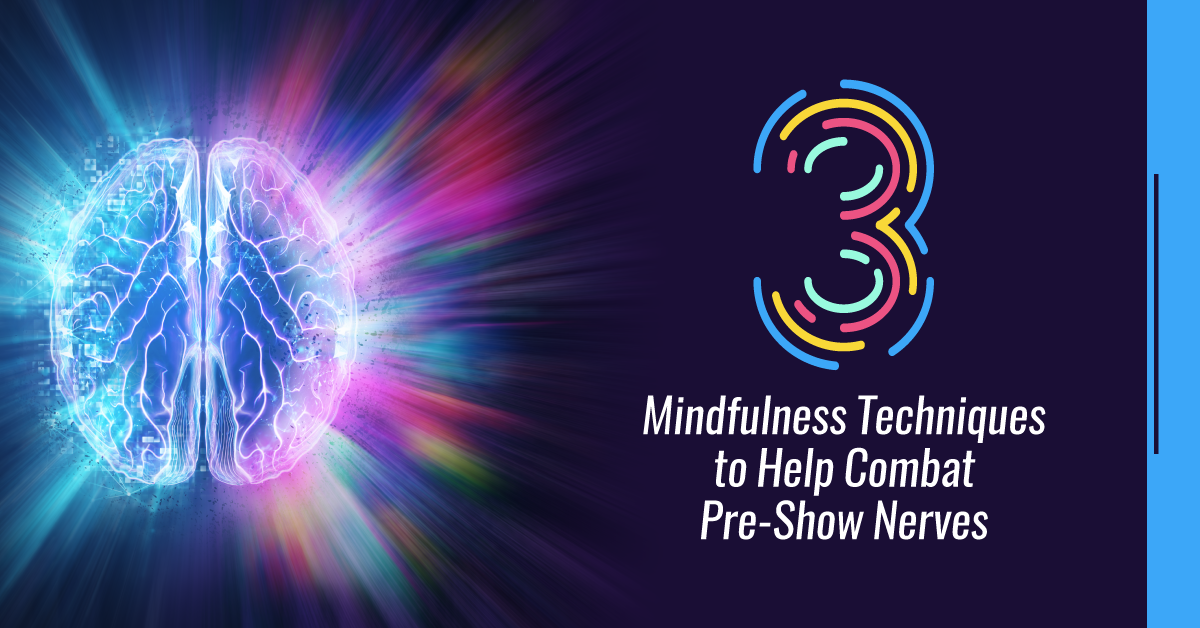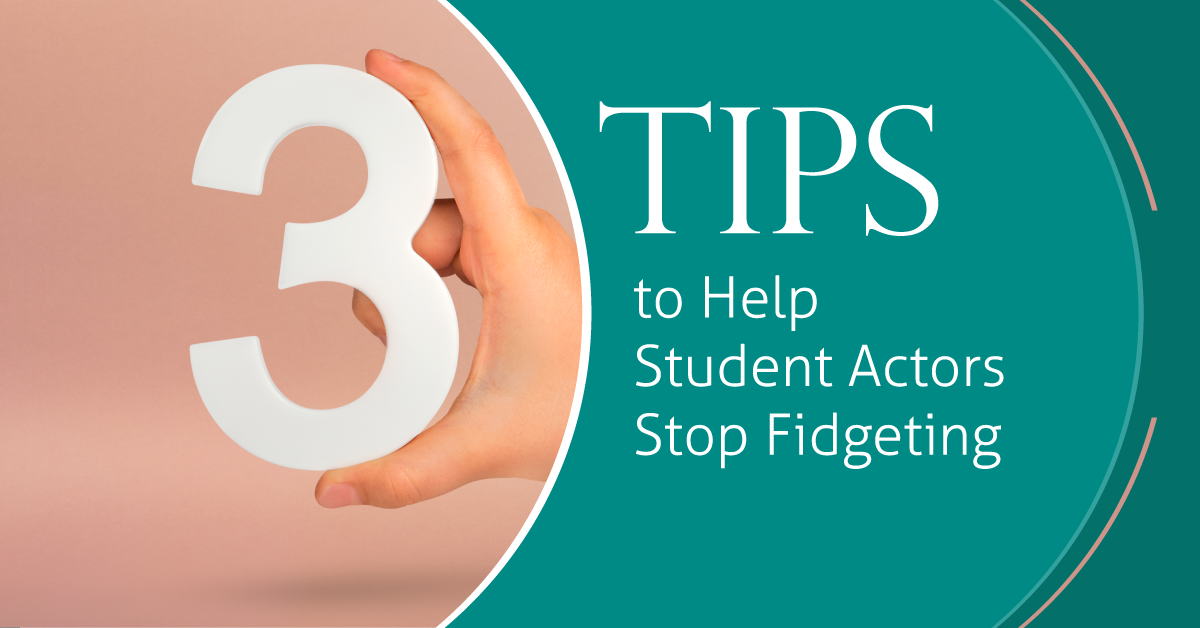3 Mindfulness Techniques to Combat Pre-Show Nerves
Mindfulness is all about being fully present in the moment without judgement. Practicing mindfulness is helpful for drama students, because it can help them combat pre-show jitters. Instead of worrying about past mistakes or stressing over what might happen during the show, students can take a few moments to simply be present, check in with themselves, and create a sense of calm.
You can add mindfulness techniques to your pre-show warm-up routines or teach these techniques for students to use on their own. Best of all, they don’t take much time. Students don’t need to sit and meditate for hours to practice being mindful — they can use these techniques virtually anywhere. Here are three techniques for your students (and you!) to try:
1. Body Check-in
Have students stand or sit comfortably in a chair, without slouching. Starting at the toes, have them bring awareness to each part of their body, moving up towards their head. That means thinking about that body part, noticing any feelings of stress or tension, and relaxing the body part. Students can do a brief sweep of the body (feet, legs, lower back, upper back, arms, shoulders, neck, head) or break it down into even smaller sections (toes, heels, ankles, calves), depending on how much time they have to devote to this practice.
Repeated practice of this exercise can help students become aware of where they hold tension. Common areas include the jaw (clenching teeth or holding the tongue to the top of the mouth), shoulders (roll them back to release them), hands (unclench fists), and lower back and glutes (gentle torso twisting movements can release tension). If they wish, once they’ve finished their body check-in, students can do some gentle stretching to further release tension in any areas they notice need some extra care.
2. Box Breathing
This technique can be done individually or as a group. Box breathing has four steps, like the four sides of a box: breathe in through the nose for four counts (feeling the air fill up the lungs), gently hold the breath for four counts, exhale through the mouth for four counts, and pause at the end for four counts, repeating the pattern as many times as you wish.
Box breathing helps to calm students’ nerves (regulating your breath can lower levels of the stress hormone cortisol) and slow down their racing thoughts. It acts as a focus point for students, particularly if the idea of meditation is too abstract or difficult for them to understand. Students can focus on the sounds their breath makes, noticing their bodies’ movements as they breathe, or count silently while doing the exercise. This takes the focus off of nerves and moves it onto the breath.
3. Releasing Thoughts
This is one of the more challenging techniques, but with practice, it can deliver incredible results. It’s a great way to introduce meditation and visualization techniques to students in a way that’s easier to understand and practice.
Have students sit or lie down comfortably. Set a timer for one minute. Tell students to empty their minds and think about nothing. Spoiler alert — this will not happen. As soon as you tell someone to not think about anything, thoughts immediately fill up their brain. That’s ok! Here’s where the magic happens.
Students will notice a thought enter their brain (“This is stupid,” “My nose itches,” “Am I doing this right?” “I’m afraid I’m going to trip and fall onstage tonight”). Once that thought pops into their head, there are two tricks. The first is for students not to judge themselves for having the thought, or for whatever the thought is.
The second trick is to notice the thought and imagine it as something light and airy — a bubble, a butterfly, a bird. Imagine taking that thought and releasing it into the sky. Watch it gently float away. Then, when another thought enters their brain, they will release that thought too, repeating until they are truly thinking of nothing, or until the timer goes off. This can help students release stress and worries and calm their mind. Once they’re comfortable with the exercise, increase the time by small increments.
For additional advice on helping your students deal with nerves, check out this appropriately titled article: Dealing With Nerves.



